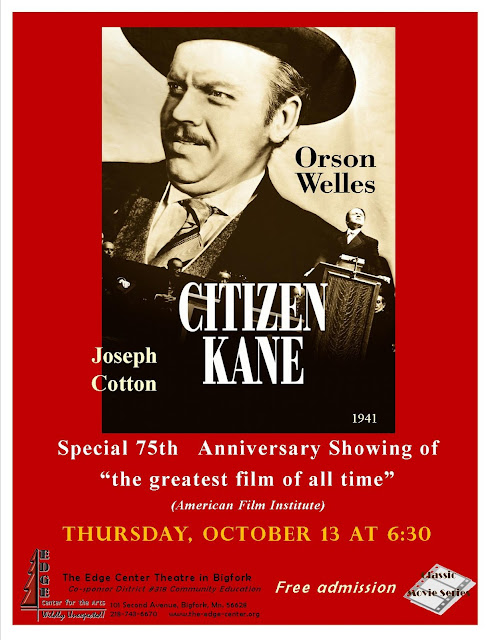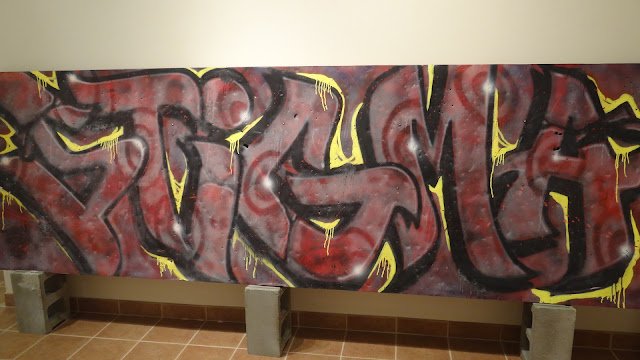“Citizen Kane” is a 1941 mystery drama movie with Orson Welles its producer, co-author, director and star. It is a quasi-biographical film of the main character Charles Foster Kane, played by Welles, being part print media mogul William Hurst, two parts well known Chicago business tycoons of that era, and one part part Welles’ life. This does not immediately sound like the makings of what has been called the greatest film of all time. Orson never made movie before and created a new concept in film making. This movie is worth seeing plus find out what “Rosebud” really means in the story. “Citizen Kane” will be shown by Jack Nachbar at The Edge Center in Bigfork on October 13th at 6:30PM, free of charge. The movie will be accompanied by Jack’s presentation providing a better understanding of the film at the time period of the picture's release.
With Orson never making a movie before this and creating a new concept in film making by doing so, this is a special event in in film history. This movie is best seen on the big screen and, it is worth seeing for its "new" approach in
movies, plus you will get to find find out what “Rosebud” really means in the story. The part this word means to the movie is special all by itself.
“Citizen
Kane” is about a reporter assigned to find out the meaning of a newspaper
publishing magnate’s last word, “Rosebud”, and the reporter’s search for an
answer. That’s it for the story line, but the twists and turns of this
assignment makes for the classic that the movie became.
The drama of the "back-story" is part of what makes the movie so remarkable remarkable by itself, but the filming, techniques and seemingly simple story-line is what makes the extraordinary. All this made Orson a giant in
the film industry after just his first ever try at making a movie.
The
movie was nominated for nine Academy Awards, but won only one. It is said that
the reason was resentment by virtually every one in the industry at the time,
and “block voting” to keep “Citizen Kane” in the background of that year’s
productions. Before Hollywood, the film industry was courting Welles’s talents
for some time, and the finallythe possibility of making huge amounts of money attracted
him, but Frank Brady says Welles…”, was still totally, hopelessly,
insanely in love with the theater, and it is there that he had every intention
of remaining to make his mark.”
But after
the remarkable success of “The War of the Worlds” broadcast, RKO Pictures made
him an offer he could not refuse. That offer was probably responsible for so
much animosity and plain old jealousy in the industry. Ref: https://en.wikipedia.org/wiki/Citizen_Kane
Here is one more push for you to come to Bigfork for this
classic. It is from the New York Times review by Bosley Crowther published May
2nd 1941. The
first paragraph reads in part … “Within the withering spotlight as no other
film has ever been before, Orson Welles's ‘Citizen Kane’ had its world première
at the Palace last evening. And now that the wraps are off…it can be safely
stated that suppression of this film would have been a crime. … "Citizen
Kane" is far and away the most surprising and cinematically exciting
motion picture to be seen here in many a moon. As a matter of fact, it comes
close to being the most sensational film ever made in Hollywood
You can
see this movie free of charge. An appropriate snack will be
served courtesy of Jack and his wife/projectionist, Lynn. Place: The Edge Center



























